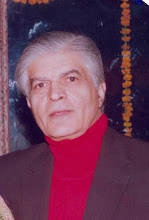THE CARDIO-VASCULAR SYSTEM

The Thump and the Flow of Life
Function The transport company, delivers O2 + nutrients collects CO2 and waste products.
The heart is an unstoppable pump beating night and day for as long as you live. This action of pumping circulates blood which is needed by every cell of your body. Blood is loaded with life giving oxygen and nutrients without which the cells would die.
This CV system consists of the heart and a set of branching and sub branching channels called arteries, the blood pumped by the heart is cared by these channels to all organs and tissues. The arterial blood carries oxygen and other energy sources (nutrients). Waste products and CO2 in the blood come from cells or tissue and organs and is carried back to the heart by the small and large veins.
Once Oxygen enters the blood in the lungs it has to be delivered (by the left side heart) to the cells quickly for it is urgently needed by the cells the second part of this action is bringing back the blood containing carbon dioxide to the heart through the veins. This CO2 containing blood is pumped by the right side of the heart through the lungs where the CO2 is exchanged for O2. These two pumps (left + right) circulate all the blood all round the body once in 90 seconds.
CARDIAC MUSCLES the untiring worker that drives the pump
The cardiac muscles have less stripes (when seen under the microscope) than the skeletal muscles. The muscle fiber is strong and they never stop working through out the day and night.
The muscle fiber branch and join muscle cells near by. This joining and linking gives cardiac muscle its strength.
The control of contraction is internal and automatic and is a result of an ability of some cardiac muscle fibers called pace making conducting cells. Their activity generates an impulse that results in ion transfer and electric charge this starts the contraction.
The rate normally is 60 to 80 per minute but increases with work and heavy load lifting, since now more oxygen is required and therefore more blood is needed to be pumped.
The rate also goes up during fever and mental stress.
The heart pumps enough blood to every part of the body. It pumps about 1000 gallons in 24 hours.
CHAMBERS OF THE HEART Two hearts - the receiving and the delivering pumps with the lungs in between
There are four chambers and these are the right atrium and the right ventricle. These two chambers are on the right side of the heart and are used for the purpose of pumping blood through the lung arteries (the only artery with low oxygen blood) to the lungs where the oxygen is picked up.
The lung vein (the only vein with high oxygen blood) carries the blood back to the left atrium of the heart. The blood passes to the left ventricle from where it is pumped at high pressure into the aorta the main artery out of the heart.
Heart beat the rhythm with variations
-Doctors check the rate for information on your health.
-Pulse rates vary between 60 and 100 beats a minute. About 75 is average.
-Vigorous exercise, or a shock, can push the heart rate up to 100-140.
-A heart-rate of over 100 beats a minute is called tachycardia.
-If someone has tachycardia when sitting down normally, it may be caused by too much coffee or tea, drugs, anxiety or fever or may be due to a heart problem such as coronary artery disease.
-A heartbeat slower then 60 beats a minute is called bradycardia.
-Any abnormality in the rhythm of the heartbeat is called arrhythmia.
-The wave of contractions in heart muscle is the result of an electrical activity.
If doctors suspect a problem, they connect the patient to an EGG, or electrocardiogram.
Any question should be address to: consensusdc@yahoo.co.in you will receive further information regarding your question.
All posts are stored in the archives for access and review
Visit the blog for updates and fresh additions





No comments:
Post a Comment